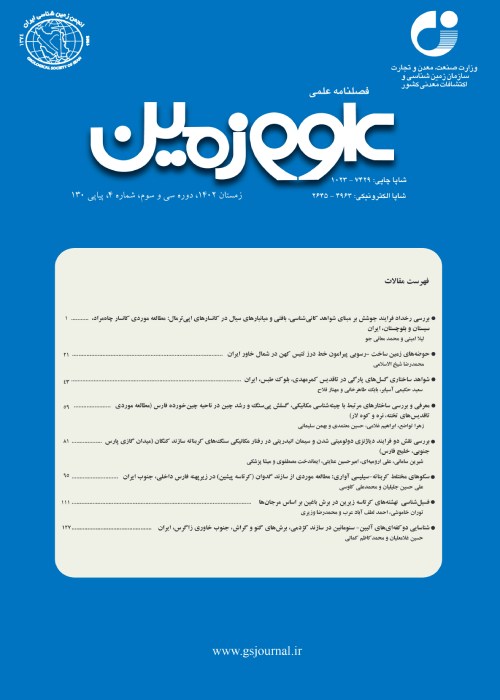Determination of Aftershocks Attenuation Behavior of Moderate to Large Earthquakes in Iranian Plateau
Author(s):
Abstract:
In this study,attenuation behavior of moderate to large earthquake aftershock sequences occurred in Iranian plateauhas been investigated according to the empirical Omori Law. Due to proper recordings of instrumental earthquakes 1990 to 2012, important earthquakes of this period were ed. After determination of aftershock sequences using temporal-spatial window defined by Gardner &Knopoff (1974), 14 sequenceshaving enough recordings and appropriately distributed over the Iranian plateau were investigated in terms of attenuation behavior curve.Therefore, the Omori curve and parameters (p, c and k)were plotted and calculated for each sequence. Results show that for the Iranian plateau earthquakes, p-values range between 0.39 and 2.7, parameter c values vary 0.01 to 5, and paremeter k shows values in the range of 10 to 1427.4. This high variability is taken to indicate not only a variety of aftershock occurrence patterns in the Iranian plateau, but also an incomplete and inhomogeneous earthquake catalog.By using the present database, therefore, it is not easily possible to have a zonation based on temporal attenuation behavior of aftershock activitiesover the Iranian plateau. However, the estimations of aftershock attenuation rate for each locality can be used to analyze seismic hazard. Present study showed that the p-values and hence the aftershock attenuation rates in the Alborz and Zagros regions are greater than those in the eastern and central parts of Iran. The higher the rate, the greaterthe energy release, which means a shorter time to gain background seismicity. This result is comparable and consistentwith the amount of energy released in theseismotectonic zones of the Iranian Plateau. Moreover, 7 out of 14 earthquake sequences have secondary aftershocks, which give two values for each Omori parameters. Results demonstrated that with a higher earthquake magnitude, the occurrence of the next big event as well as secondary aftershocks is more likely. Furthermore, for the 7 sequences with secondary aftershocks, a trend of P2 variations is observable. P2 is more than 2.5 for 3 of these sequences that have magnitudes above 7 and occurred along the Iranian plate boundaries. For the other 4 intraplate events, which have magnitudes less than 7, P2 is less than 2. This might be due to a magnitude change or tectonic setting and distance of hypocenter to the main fault nodes. Resultsalso showed that the c and k parameters are highly affected by number of recordings in the catalog. A more complete and homogeneouscatalog would produce well-constrained values for these parameters,which in turnmakes the analysis of the seismicity and physics of the fault zone more accurate.
Keywords:
Language:
Persian
Published:
Geosciences Scientific Quarterly Journal, Volume:24 Issue: 95, 2015
Page:
143
magiran.com/p1417298
دانلود و مطالعه متن این مقاله با یکی از روشهای زیر امکان پذیر است:
اشتراک شخصی
با عضویت و پرداخت آنلاین حق اشتراک یکساله به مبلغ 1,390,000ريال میتوانید 70 عنوان مطلب دانلود کنید!
اشتراک سازمانی
به کتابخانه دانشگاه یا محل کار خود پیشنهاد کنید تا اشتراک سازمانی این پایگاه را برای دسترسی نامحدود همه کاربران به متن مطالب تهیه نمایند!
توجه!
- حق عضویت دریافتی صرف حمایت از نشریات عضو و نگهداری، تکمیل و توسعه مگیران میشود.
- پرداخت حق اشتراک و دانلود مقالات اجازه بازنشر آن در سایر رسانههای چاپی و دیجیتال را به کاربر نمیدهد.
In order to view content subscription is required
Personal subscription
Subscribe magiran.com for 70 € euros via PayPal and download 70 articles during a year.
Organization subscription
Please contact us to subscribe your university or library for unlimited access!


